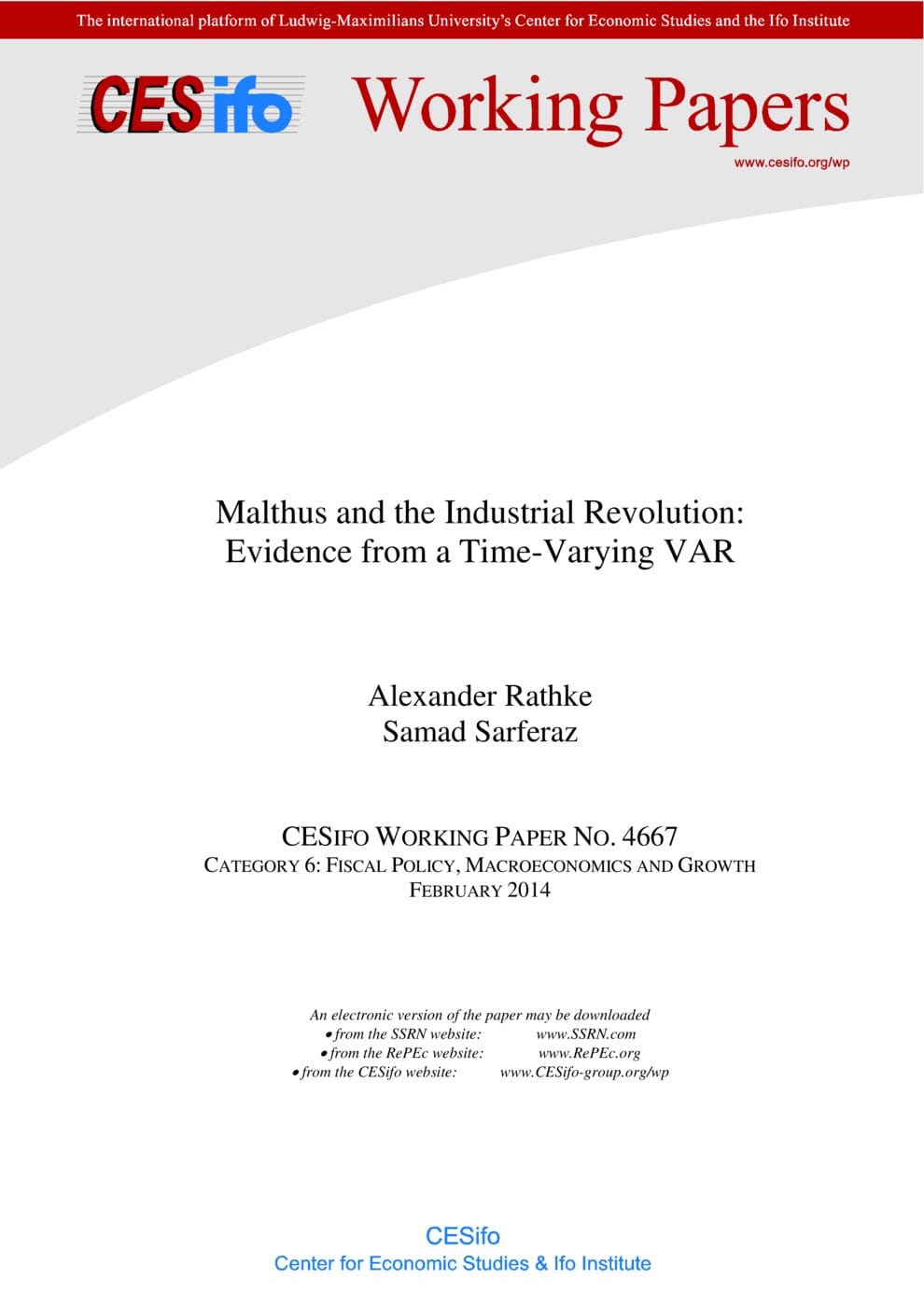Malthus and the Industrial Revolution: Evidence from a Time-Varying VAR
CESifo, Munich, 2014
CESifo Working Paper No. 4667

In the process of economic development economies grow through various regimes, each characterized by different demographic-economic interactions. The changes in these interactions are key elements in different explanations of the escape from Malthusian stagnation. We employ time-varying vector autoregressions, an approach that allows tracking this transition for England in the period between 1541 and 1870. The empirical findings suggest that the link between real wages and population growth was at work until the 19th century. Furthermore, we document changes in the propagation mechanism from real wages on population growth over time that feature prominently in Unified Growth Theory. Most remarkably, in contrast to earlier empirical literature we find strong effects of income on mortality after the 1750s.
Fiscal Policy, Macroeconomics and Growth